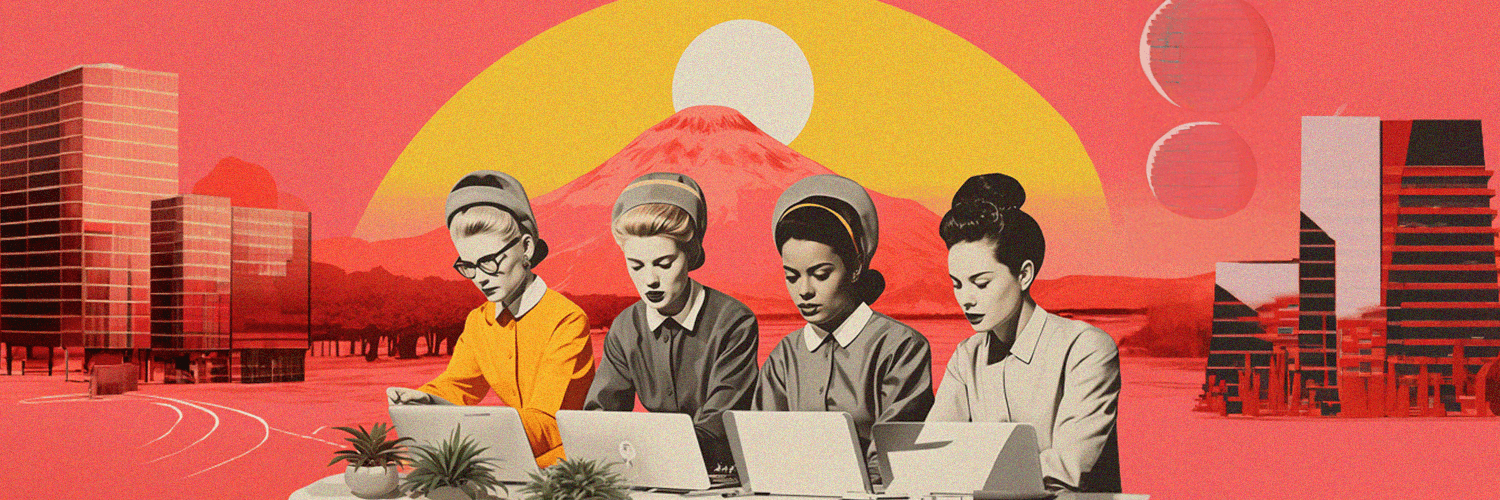Ladies and gentlemen, all aboard the Experience Economy! The train is leaving in…
Well, we don’t know exactly when this train is leaving. What we know for sure is creating experiences at work is not a train scheduled for the future. What’s more, workplace experiences are now about more than just the end customers.
Sure, building an excellent customer experience is key – but as we learn more about human psychology at work, it becomes increasingly clear that creating positive experiences should be about the people working in the organization too.
As Cosmin and Simone put it in the podcast, “every workplace is a microcosm.”
How do you create a workplace experience that attracts, engages, and retains talent?
Here’s what Simone and Cosmin discussed in YAROOMS’ latest WorkplaceWhiz.
Times Have Changed. Your Organization Should Too.
Office work used to be bound to the physical office – without it, performance was close to impossible. Then, as means of communication evolved, businesses started to focus more on building fast and aiming for very high levels of performance. And as we stepped into the digital era, engagement became the name of the game.
The post-pandemic world may seem to look the same on the surface – but lockdowns did leave their imprint on how we work. From short-focus engagement, organizations around the world started to embrace long-term cultural changes, rather than short-term solutions. Companies now recognize the importance of investing in their employees and providing them with resources and support to help them reach their full potential – and that can only come with a positive workplace experience.

Who Creates and Owns the Workplace Experience?
Before the pandemic, workplace experience was mostly related to Faciity Managers. Ensuring clean, functional, efficient workspaces was key to fueling both the Performance and the Engagement eras.
In the wake of a series of lockdowns that left office building empty and desolate around the world, both the role of Facility Managers and the ownership of workplace experience shifted dramatically. Today, says Simone, the best organizational workplace experiences are built at the confluence between Facility Management, Human Resources, and IT.
Think of it this way: in hybrid work settings, everything is workplace experience. From the monitor you keep on your desk to how heavy your laptop is or how clearly you can hear remote co-workers in meetings, workplace experience is everywhere – many times, even outside of the physical office too. And that is exactly why Facility Management, HR, and IT need to collaborate seamlessly.
The Role of the Middle Manager
Although middle managers have often been considered as a mere cushion between the strategic levels of a company and the more hands-on workforce, their role in creating fantastic workplace experiences has drastically changed.
Middle managers meet, support, and guide employees throughout all of their touchpoints in a company. From onboarding materials to offboarding well-wishes and from enabling teams with technology to measuring performance, middle managers are there, in the trenches, every day.
Therefore, no one in any organization is more qualified to understand different viewpoints: that of the senior management and that of the team. This also means investing in good middle managers can retain talent and keep your employees’ brains from looking for the “what is it next for me.”
The Role of Tech in Work/Life Balance
Another topic Simone and Cosmin discussed was how technology can enable better work/ life balance – even in remote settings, now famous for feeling like 24-hour long offices.
One interesting point Simone made is that a lot of the issues related to work/ life balance in hybrid and remote settings are related to false prioritization. For instance, people tend to believe instant messaging is one and the same as instant responding – thus constantly maintaining themselves in a state of de-focus. To address this kind of issue, employees and management need to draw boundaries and communicate the importance of taking breaks and focusing on the task at hand. Companies should also create policies that promote work-life balance and foster a healthy work environment.
The Role of the Office in a Hybrid World
From all-office to full-remote and then in-between, the world of work's gone through many changes in a very short period. So, what does it mean for the role of the office?
Most argue that in-office work is mean for better collaboration. And while that's true, it isn't the only type of work to do in an office. In fact, according to Simone, a hybrid office needs to reflect the different types of work people need to do: creative work, focus work, contemplation, and so on.
And that's exactly where technology can help: it can bridge the gap between the different ways of working and types of work to create a seamless experience that fosters productivity, creativity, and collaboration. The office should be a place that supports and enhances the work experience for all types of work, not just collaboration.
Keep in mind, however, that a great workplace experience is not just about technology either. As an employer, you should make things easy for your team -- provide them with access to food places for lunch, free coffee, a productivity-enhancing office layout and design, and so on. These may seem like small things, but they add up -- and lacking them might have a negative impact on the overall workplace experience.
So, how do you create a great workplace experience that attracts, engages, and retains talent? It's not just about one person or department; it takes collaboration between different areas of an organization to create an environment that supports and enhances the work-life balance of employees.

How to Create a Smooth Workplace Experience
Simone and Cosmin also touched upon some of the most important elements that contribute to a great workplace experience. Here's a quick rundown of the tips they discussed:
Genuine Active Listening
Many people tout the benefits of active listening, but few actually do it. To create a workplace experience that fosters open communication and trust, employers must actively listen to their employees' needs, concerns, and suggestions. This means not just hearing what they say, but truly understanding and taking action on their feedback.
Commitment to Improvements
It's not enough to just say you'll improve the workplace experience – actions speak louder than words. Employers must be committed to making necessary changes and improvements based on employee feedback and ongoing assessments of the workplace experience.
Giving Employees Choice
...Real choice. This means allowing employees to have input on their work schedules, work-from-home options, and even office design. Giving people a sense of control over their work environment can greatly increase job satisfaction and overall workplace experience.
Details Really Do Matter
From the colors you use to decorate your office to the type of coffee you provide, small details can make a big impact on workplace experience. Employers should pay attention to these seemingly minor factors and strive to create an environment that is not only functional but also enjoyable for employees.
Be Adaptable
Times change, and so do workplace preferences. Employers must be adaptable and open to trying new ideas and technologies to improve the overall workplace experience for their employees. This includes being open to remote work options, flexible schedules, and embracing new technology.
Embrace Management Role Modelling
Management role modeling is crucial in creating a positive workplace experience. Employers should lead by example and embody the values and behaviors they want to see in their employees. This also means being approachable, transparent, and open to feedback.
Purposeful Technology
Don't buy tech just for the sake of it -- buy it because it actually helps your team be better, whether through increased efficiency, improved communication, or enhanced collaboration. Invest in technology that aligns with your team's goals and needs.
Reinforcing Positive Behavior
Positive reinforcement can go a long way in improving the workplace experience. Recognize and reward employees for their hard work, dedication, and contributions to the team. This will not only boost morale but also encourage continued positive behavior.
Make The Entire Workplace Your Employees'
Back when hybrid work was very rare and people mostly spent their working days at a desk, they made it theirs. The cute little photo of their kids' first day of school, the framed inspirational quote on their desk, the coffee mug with an inside joke plastered on it -- they were markers of a personalized space.
Desk hoteling and office hot desking may have taken away this sense of "belonging" to a specific workspace, but that doesn't mean employers shouldn't strive to create an environment where employees feel comfortable and at ease. Make the entire office your team's personalized space by incorporating elements that reflect their personalities and interests, such as a communal art wall or designated areas for different types of work.
The Future of Work Is...Present
People keep talking about the "future of work", but for the largest part, everything they say is...already happening. Remote and hybrid work, technology integration, work-life balance – these are all current realities that employers need to adapt to in order to create a smooth workplace experience.
As a business, you need to adapt to the new reality and embrace the changes that technology and shifting work styles bring. This includes investing in communication platforms, remote work tools, and flexible work arrangements. It also means fostering a culture of adaptability and openness to change within your organization.
Make sure each and every one of your team members feels involved in the change process. Make it crystal clear to everyone how each person drives the organization to the next goal and how their work directly impacts the success of the company. By creating a sense of purpose and ownership, employees will feel more invested in their work and motivated to contribute to the overall workplace experience.
Want to listen to the entire conversation? Click here and get it on







